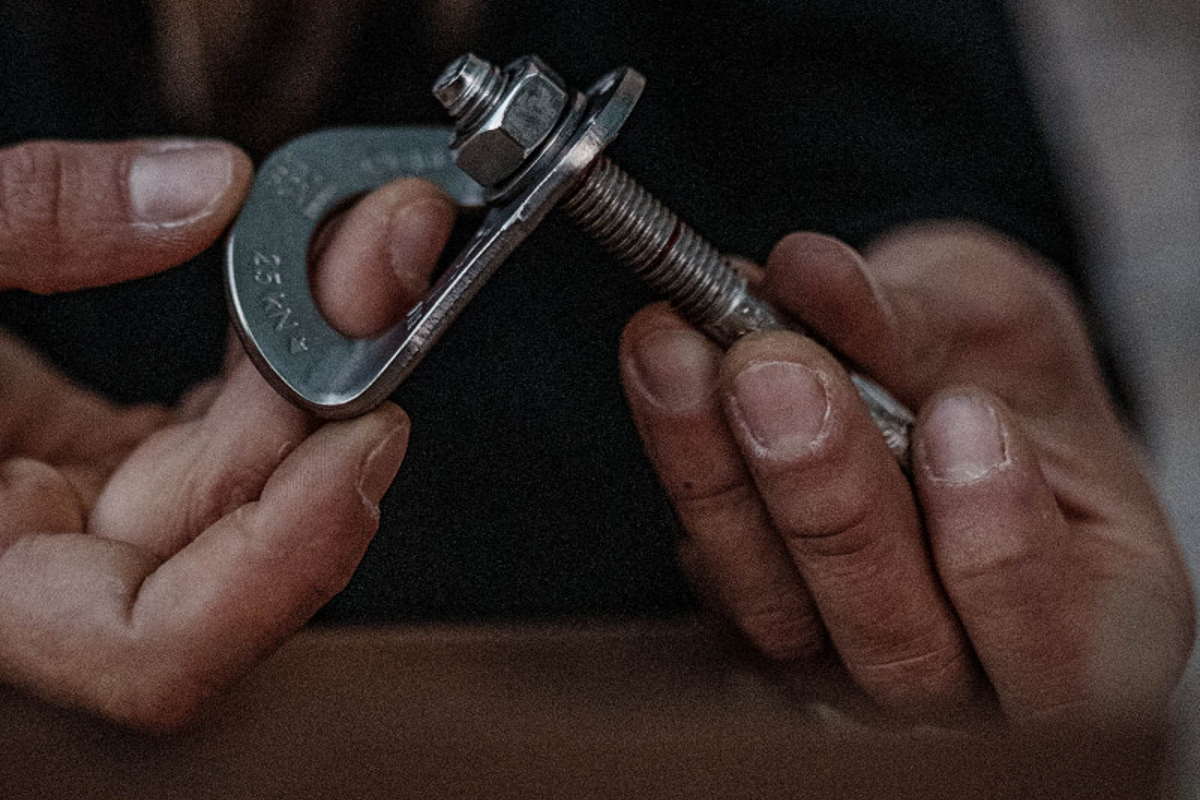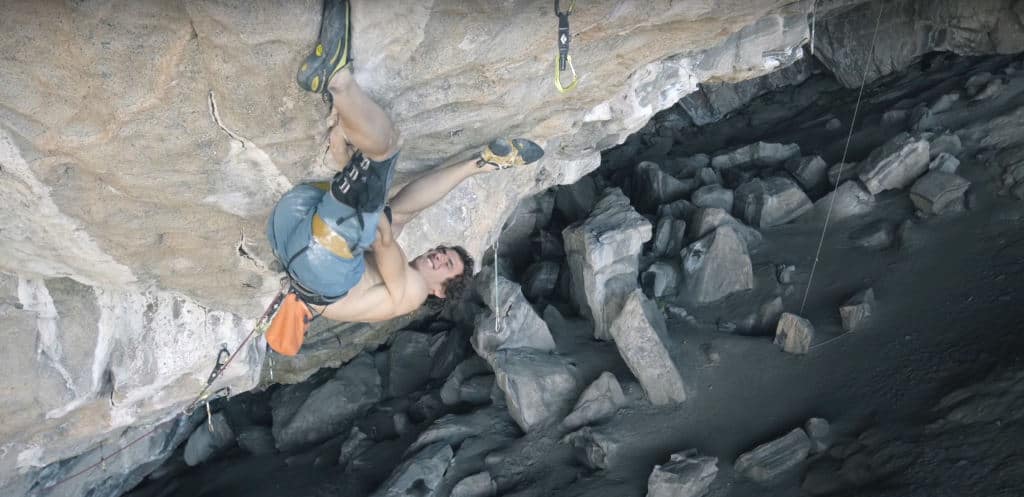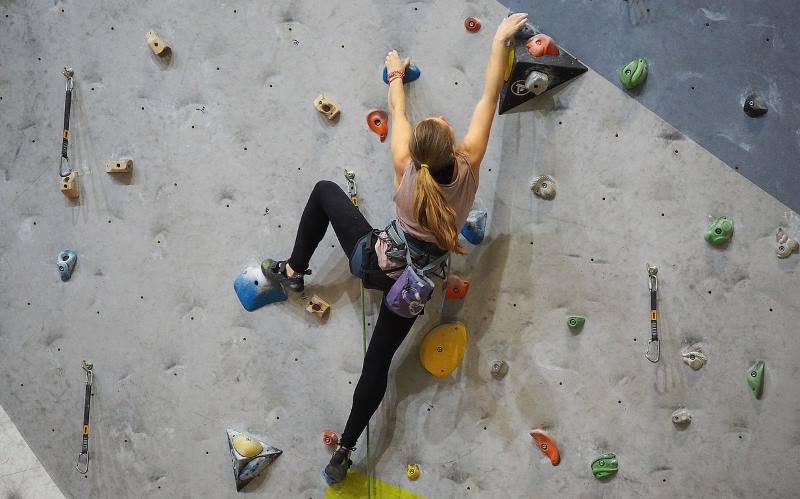As new climbing gyms open at a rapid pace, many are discovering how rock climbing and bouldering can be a great workout. Let us convince you why rock climbing for exercise is a great idea!
Rock Climbing For Exercise
While rock climbing started as a deviation from mountaineering back in the 1800’s, it has since evolved massively. The central themes of adventure and boldness are still up front but there is now much more of a focus on the health benefits of climbing.
Rock climbing for exercise has become more popular as commercial climbing gyms have seen a second boom. Now it’s most common for people’s first time roped climbing or bouldering to be indoors.
As a result people have tended towards seeing the climbing first as an exercise and a physical skill rather than a tradition. From there it will often snowball into a way of local or international travel, exploring, learning rope and gear skills, and getting outdoors.
We highly encourage getting you into what rock climbing can offer late down the line – even if it starts as a bit of a gym-replacement thing first.
Is Rock Climbing A Good Workout?
Absolutely. It’s possible to build muscle, enhance co-ordination, buff flexibility, and get a good cardio workout all in one session. Rock climbing as an exercise covers a lot of bases.
You can get sweaty and push your limits in a fairly safe and controlled environment. The “vibe” is a lot more friendly and encouraging as socializing and chatting is encouraged (depending on when you read this).
For many, a session of climbing or bouldering has replaced the gym as a more fun, social, and mentally stimulating form of exercise. You can choose whether to go in for a hardcore training session or a lighthearted tour of the fun routes.
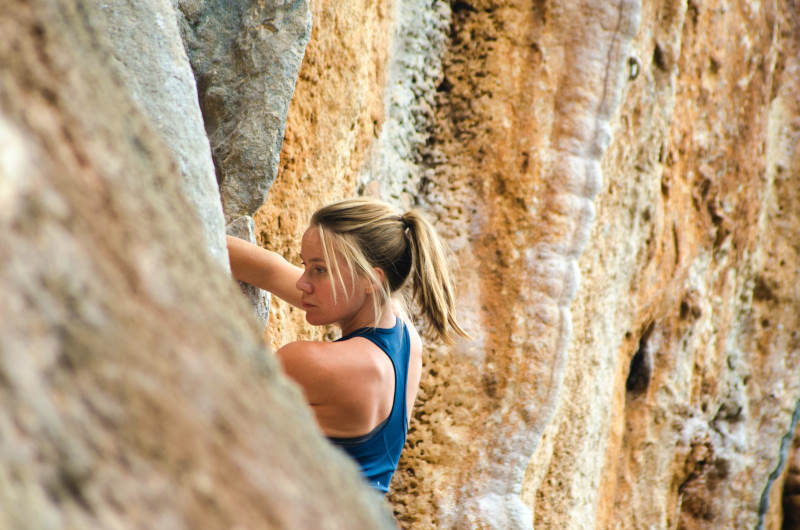
Is Bouldering A Good Workout?
Yes, bouldering is an amazing workout in the same way as rock climbing is. When we talk about starting rock climbing in this article we are assuming a couple of things. Firstly that you’ll probably start in a gym, and secondly that you’ll be doing roped climbing or bouldering interchangeably.
Roped Climbing = Attached to a rope that a partner holds with a safety device. Climbing up to 15-20 meters / 49-65 ft depending on where you are. Falls are safe and much less scary than you think. You’ll start with top-roping.
Bouldering = Climbing only to around 4-4.5 meters / 13-14.5 ft. You climb back down or fall/jump onto really thick protective matting that covers the entire area. No ropes or harness needed. Read What Is Bouldering?
Honestly just try whatever one is available locally but ideally both to see what you like. Roped climbing tends to be a little more about technique, mental game, and planning skills. Bouldering tends to be more physical and better suited to exercise.
Is Climbing For Strength Or Cardio?
Climbing does some amazing things for your body and is considered by many to be a full body workout. The muscles used in climbing are mainly the upper back and core but your legs and many other smaller muscle groups are involved.
Does Rock Climbing Build Muscle?
Yes! Rock climbing is a super fun way of building muscle, especially in the upper body. The main muscle groups that get worked are the forearms, shoulders, upper back, and abs/core.
If you are worried about “getting too bulky” that’s not really how climbing or even weightlifting works. It takes a lot of time and hard work to build muscle and it won’t be noticeable for a while. You won’t get bulky by accident.
Muscles Used In Rock Climbing?
Rock climbing uses a few different muscle groups as well as strengthening the tendons. It’s important to know that muscle builds by using them at near their max power, causing micro-tears. These micro-tears repair with the nutrients we get from food.
If you try to do the same with tendons and stress them to their limits you can damage them fairly easily. Tendons take a long time to build strength so take it easy with smaller holds when you first start climbing. If your fingers hurt: stop.
Forearms
In the forearm there are multiple muscles used to grip, flex, and extend the fingers and thumb. These muscles are interconnected help to actively pull and grip, as well as pushing outwards and stabilizing for things like finger jams.
Climbers normally have pretty detailed muscles on the forearms as the group gets worked constantly. Surprisingly you don’t need massive forearms to stay attached to the smallest holds. Technique and footwork contribute a huge amount.
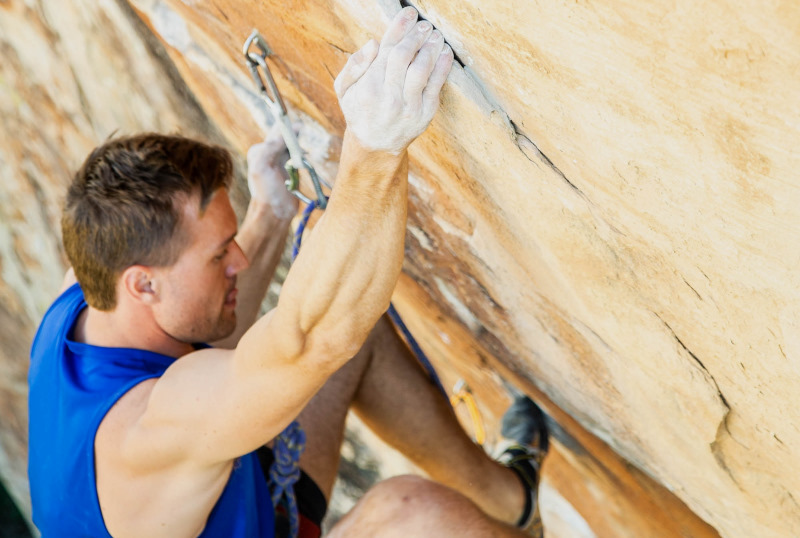
Biceps
All that pulling down uses the biceps almost non-stop and you’ll find your arms growing pretty fast. There are a few other muscles used in pulling and stabilizing the fore-arm and elbows. The triceps get involved a little but it’s worth adding extra work for them if you want to build both.
Back
The back muscles used in climbing are worked constantly. Pulling down and inwards we use the latissimus dorsi (known as the lats) which is the large and wide lower back muscle. The traps or trapezius of the upper back and neck is very important.
Other smaller muscles used in climbing are the rhomboid, teres major, deltoids, infraspinatus and others. You can probably see the results of so much back work on a sweaty day at the crag. “Climber’s wings” are a very real thing.
Core + Abs
Your core and abdominal muscles play a huge part in climbing. The abs are the most visible parts but the core muscles that stack around your spine and trunk are key.
While you climb the core muscles keep your body stable and allow your legs and arms to move independently without the body moving too. The internal and external abdominus and obliques, serratus, erector spinae and more are involved in that stability.
Legs
The main leg muscle used in climbing is the calf because of the very precise balance and footwork on tiny holds. You might be surprised at getting a strain or cramp in your leg when you’re concentrating on pulling so much.
The rest of the legs are less used but do play a part in stabilization. You’ll also use your leg for fun moves like toe and heel hooks. Flexibility in the hips is more important than leg strength in the earlier stages of learning to climb.
Rock Climbing Muscle Imbalances
As there is a lot of pulling down and backwards in climbing, the pushing muscles tend to get skipped. There are definitely parts of climbing like mantles, undercuts, and side pulls that use those muscles – but they’re less common. Muscle imbalances from climbing can cause pain or injury if ignored.
The pushing muscles of the chest like the pectorals tend not to be used much in climbing. It’s worth adding in extra antagonist exercises like the bench press or pushups for the chest with overhead press or dips for the shoulders.
More For New Climbers
– Rock Climbing Weight Loss
– Best Beginner Climbing Shoes
– What To Wear Rock Climbing
– Rock Climbing Benefits – Physical, Mental, Social + More
Is Rock Climbing Cardio?
Rock climbing is mix of strength based workout, cardiovascular exercise, and flexibility. The mental game is a big part of it but it can be very good as a purely cardio workout.
You’ll find you’re breathing hard constantly on longer climbs or when doing boulder after bouldering. If you’re looking to add more of a cardio element you can up and down-climb routes for cardio without stopping. This works on bouldering walls and especially well on auto-belays.
Can Rock Climbing Replace The Gym?
If you struggle with motivating yourself to go to the gym, or run, or exercise – joining a climbing or bouldering gym could be a great idea. Climbing is really engaging, needing you to figure out a physical puzzle to get to the top.
Compared to the thrill of picking things up and putting them down or just going forward (weightlifting and running) rock climbing for exercise is hugely stimulating. While we’re not putting any exercise down we think climbing gives so much more than the physical results.
The social side of rock climbing is really helpful both for sharing beta on a tricky route as well as motivation from a group. Also works as an end of week meetup with friends that doesn’t involve the bar – at least until the session is done.
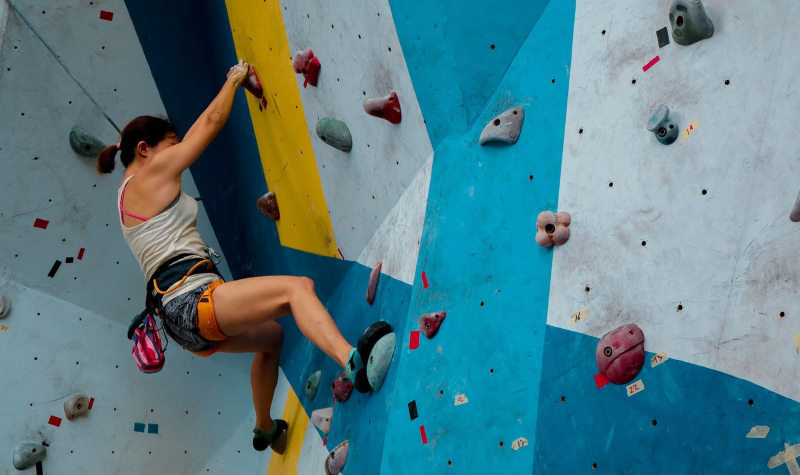
How Many Days A Week Should I Climb?
You might find that after just a couple of sessions into bouldering or climbing you’ve already got the bug. Once you get into the sport it can be hard to stop as you progress a lot in the first few months.
“How many days a week can I climb” and “Can I climb every day” are really common questions for keen beginners. As a rough guideline: three times a week with at least a day’s rest in between each session is plenty. However, use this time to find your limits and listen to your body.
In the first few months the most important thing is to avoid injury. Finger injuries can happen from sudden “acute” pulling or from repeated over-use. Learning about technique will make a much bigger difference in the first year.
Can I Climb Two Or Three Days In A Row?
It’s possible but we don’t recommend climbing more than two days in a row consistently. Climbing three times a week with at least one day between each session is perfect. So you might climb on Monday, Wednesday, and Saturday with running or other exercise if you’d like on other days.
Two or three days in a row risks an injury in the early stages. For the first year or so we’d say to try and focus purely on not getting injured. Finger injuries or muscle tears can impact the rest of your life and not just climbing.
Resting In Climbing Is Important!
Muscles need total rest to repair and your tendons are very sensitive to over-training. Take rests between climbs, between sessions, and when your body is telling you to. Injury is common because you either push a muscle or tendon too far – or when you aren’t concentrating.
